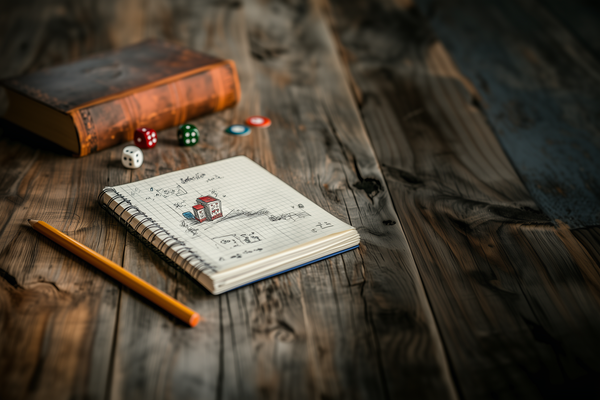Decision Space in board games
This is a designer post - I have been struggling somewhat with creating a nice decision space in Behemoth, so I thought I would pause and think about it deliberately, and write a post in the meanwhile.
My idea of a decision space
I would describe a decision space as a list of all the decisions that are available to a player throughout a game.
I imagine it as a landscape surrounding a player. You can go south and climb a hill, or take a stroll in a valley to the east.

After you climbed the hill or walked the green valley, you will be able to see what lays ahead of those and new decisions will potentially open up - i.e. the visible landscape changes throughout a game.
Decisions can have different attributes:
- they can be an easy or difficult to make , e.g. it's clear that the valley is a safe path compared to the mountain VS having two similarly looking paths to choose between
- you can have decisions that are important to the outcome of the game or that don't matter much, e.g. whether climbing the hill or going to the valley you will end in the same place VS if you choose the wrong option you lose the game
- you can have decisions that turn from bad to good with time, e.g. it's better to not choose the hill path that gives you victory points at the beginning of a engine building game
And so on..
Interestingly, each decision can have multiple of those attributes!
The combination of these attributes actually shapes what a game is and what players experience:
- a difficult decision might not cause much analysis paralysis if it doesn't matter much towards the outcome of the game
- a series of difficult decisions in a sequence could make a game feel 'heavy'
- if the whole game doesn't have decisions that are important to the outcome, the game could be considered heavily luck based
Looking at it this way, the decision space is pretty much central to what makes each game unique.
Decision space in Behemoth
If I could design an arbitrary decision space of my choice for Behemoth, I would look at the experience goals I have set, and aim for something like this during one single game:
- Have some decisions to be clearly better than others - to give that sense of feeling smart
- Have some snap decisions that give you the chance to take a gamble or play conservatively, without drastically changing the overall outcome of the game -- to give that sense of swashbuckling
- A few decisions that are not easy to make but that if done correctly can slightly increase / decrease outcome of the whole game - to allow for a learning curve
- A couple of decisions that can drastically change the rhythm / rest of decisions available through the game (and to some degree, the outcome) - to increase agency and create interesting plot twists
- A couple of decisions that can gradually affect the whole game - to enable payers strategies and support learning curve
What I am realizing more and more is that translating those goals into gameplay it's quite challenging.
This is why a lot of games re-use some mechanics and framework from other games. And indeed starting from a blank framework is no way required to create a great innovative game.
Starting from a mostly blank canvas from Behemoth, the part that I have struggled the most in terms of decision space is perhaps how much freedom to give to players - I will share more about this in another future post!
Andrea




